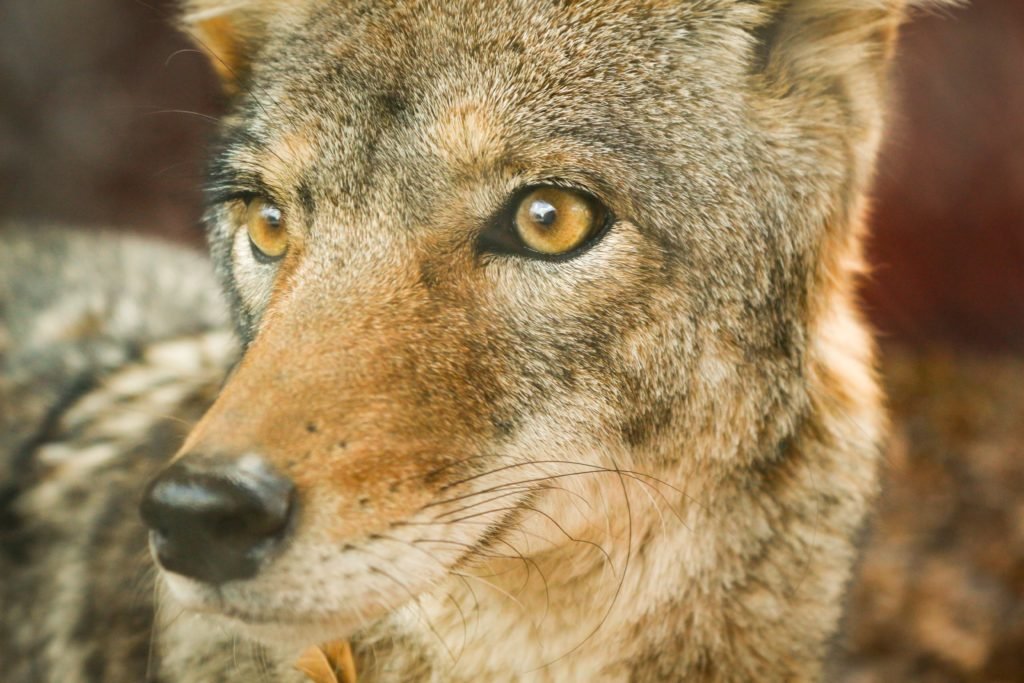
Elissa Welle | Detroit Free Press USA TODAY NETWORK
It is coyote breeding season in the Midwest. That means Michiganders might see more coyotes out and about as they establish their territory and look for mates.
The season, lasting from January through March, tends to increase brazen behavior. To avoid any unwanted coyote interactions, Michiganders should be vigilant of their pets and make their backyards less hospitable to coyotes.
Coyotes have been spotted across metro Detroit, from Belle Isle to along I-75.
Arlene Mulcare, a longtime Ann Arbor resident, said she has seen coyotes on several occasions. Once, she witnessed a pack of six coyotes meander across Main Street from the University of Michigan golf course to the nature area behind Pioneer High School late at night. Another time, a coyote ran alongside her car as she drove down Lohr Road going 30 miles per hour. She said she finds them interesting and their presence doesn’t bother her.
Hannah Schauer of the Michigan Department of National Resources (DNR) wildlife division said coyotes are an adaptable species and common across North America. Their adaptability allows them to exist near humans in suburban and even some urban settings. Decreasing habitat may also push the predators to seek food in human-populated areas.
“I think as people move in, wildlife has to adapt and they adapt much better than we do,” Mulcare said.
Many owners of small dogs have reported coyote encounters with their pets, often during brief unsupervised bathroom breaks outside. Some attacks are fatal.
The best way to discourage coyote visits to your property is to avoid feeding them. Remove bird feeders, pet food or uncontained garbage, any of which might attract birds and rodents, and thus coyotes, to your home.
Coyotes are naturally fearful of humans, who act as the primary predator of coyotes in southern Michigan where wolves are uncommon.
Schauer advised using your presence to deter coyotes from approaching dogs by accompanying them outside on leash.
“Small, unattended pets are likely to not be able to defend themselves against the larger predator like coyotes,” Schauer said. “It’s best to keep a close eye on them, especially if you know of coyote activity in your area.”
Coyotes often have a reputation for being cunning animals. Mark Twain described coyotes as animals with a “general slinking expression” in his 1872 book “Roughing It.” This description inspired the creation of the Looney Tunes character Wile E. Coyote by animator Chuck Jones in the 1940s.
Despite their cunning reputation, coyotes play an important role in the ecosystem. They act as pest control and help keep the populations of small mammals like rabbits, mice and rats in check. Still, many opinions exist regarding coyotes in Michigan.
“Some people value them as part of the ecosystem in their role as predator, and some people value them as a recreational opportunity for viewing or hunting and trapping, for example,” Schauer said. “Other people might not like to have them around. There’s lots of different opinions out there.”
Hunting of coyotes is permitted year-round across Michigan with certain equipment regulations, while trapping is allowed between Oct. 15 and March 1. Private landowners in Michigan are allowed to hunt coyotes without a permit if coyotes are doing or about to do damage to private property or land.
Opponents of coyote hunting point out that population growth is inversely proportional to population density, meaning aggressive coyote population control can lead to an increase in population growth in subsequent years. Coyote researchers say coyote attacks on humans are very rare and often associated with the presence of food.
The DNR strongly recommends never intentionally trying to tame or feed coyotes.
If you find yourself in close quarters with a coyote, Schauer recommends trying several hazing techniques to scare it off like yelling, clapping and appearing large.


Recent Comments